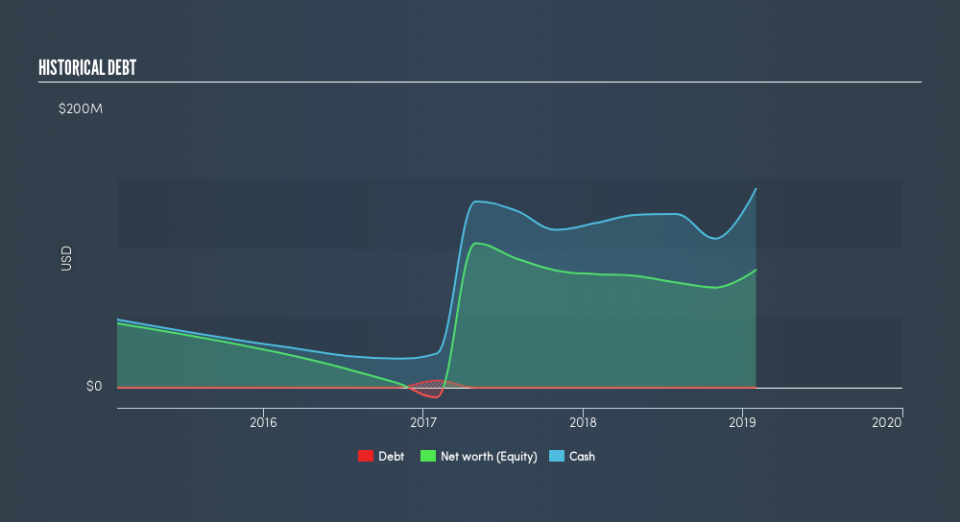Is Yext, Inc.'s (NYSE:YEXT) Liquidity Good Enough?

Stocks with market capitalization between $2B and $10B, such as Yext, Inc. (NYSE:YEXT) with a size of US$2.4b, do not attract as much attention from the investing community as do the small-caps and large-caps. However, generally ignored mid-caps have historically delivered better risk-adjusted returns than the two other categories of stocks. Today we will look at YEXT’s financial liquidity and debt levels, which are strong indicators for whether the company can weather economic downturns or fund strategic acquisitions for future growth. Don’t forget that this is a general and concentrated examination of Yext's financial health, so you should conduct further analysis into YEXT here.
View our latest analysis for Yext
Can YEXT service its debt comfortably?
A debt-to-equity ratio threshold varies depending on what industry the company operates, since some requires more debt financing than others. A ratio below 40% for mid-cap stocks is considered as financially healthy, as a rule of thumb. The good news for investors is that Yext has no debt. It has been operating its business with zero debt and utilising only its equity capital. Investors' risk associated with debt is virtually non-existent with YEXT, and the company has plenty of headroom and ability to raise debt should it need to in the future.
Does YEXT’s liquid assets cover its short-term commitments?
Given zero long-term debt on its balance sheet, Yext has no solvency issues, which is used to describe the company’s ability to meet its long-term obligations. But another important aspect of financial health is liquidity: the company’s ability to meet short-term obligations, including payments to suppliers and employees. Looking at YEXT’s US$180m in current liabilities, it appears that the company has been able to meet these commitments with a current assets level of US$230m, leading to a 1.28x current account ratio. The current ratio is the number you get when you divide current assets by current liabilities. For Software companies, this ratio is within a sensible range since there is a bit of a cash buffer without leaving too much capital in a low-return environment.
Next Steps:
YEXT has no debt as well as ample cash to cover its near-term commitments. Its safe operations reduces risk for the company and shareholders, but some level of debt could also boost earnings growth and operational efficiency. I admit this is a fairly basic analysis for YEXT's financial health. Other important fundamentals need to be considered alongside. You should continue to research Yext to get a better picture of the stock by looking at:
Future Outlook: What are well-informed industry analysts predicting for YEXT’s future growth? Take a look at our free research report of analyst consensus for YEXT’s outlook.
Valuation: What is YEXT worth today? Is the stock undervalued, even when its growth outlook is factored into its intrinsic value? The intrinsic value infographic in our free research report helps visualize whether YEXT is currently mispriced by the market.
Other High-Performing Stocks: Are there other stocks that provide better prospects with proven track records? Explore our free list of these great stocks here.
We aim to bring you long-term focused research analysis driven by fundamental data. Note that our analysis may not factor in the latest price-sensitive company announcements or qualitative material.
If you spot an error that warrants correction, please contact the editor at editorial-team@simplywallst.com. This article by Simply Wall St is general in nature. It does not constitute a recommendation to buy or sell any stock, and does not take account of your objectives, or your financial situation. Simply Wall St has no position in the stocks mentioned. Thank you for reading.

 Yahoo Finance
Yahoo Finance 
